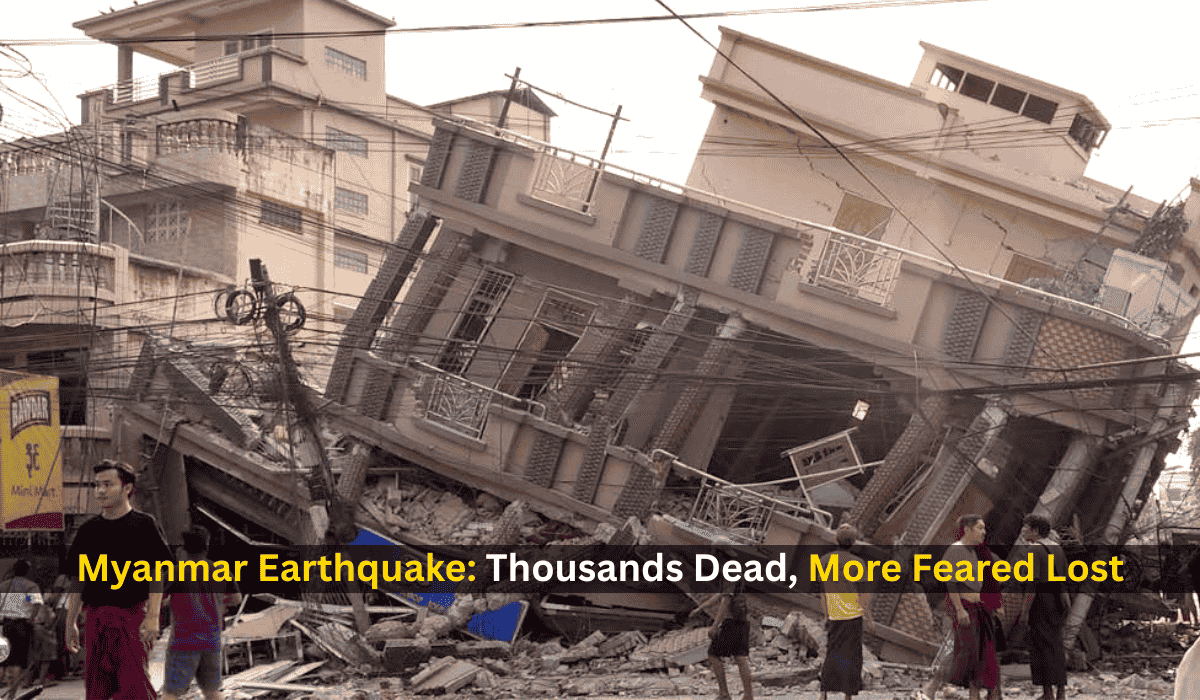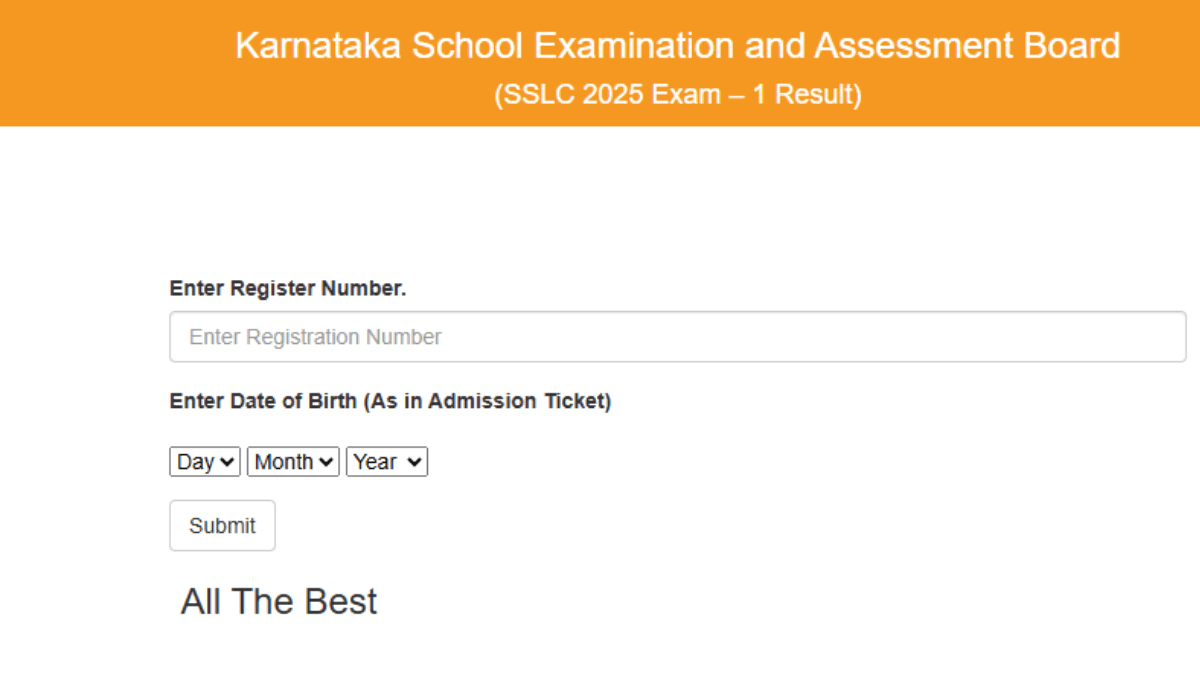Myanmar Earthquake: Myanmar just got wrecked by a massive earthquake. Like, a huge one. Happened on Friday, and experts are saying it was a 7.7-magnitude beast. One of the biggest in decades. Absolute chaos.This thing hit northwest of Sagaing, a city in central Myanmar, and triggered a red alert for mass casualties and massive damage. Not great.
The United States Geological Survey (USGS) ran their disaster models, and the numbers are scary. They’re saying casualties could be in the tens of thousands. Myanmar’s ruling junta already confirmed over 1,000 deaths, and more than 2,000 injuries, but USGS thinks it could get way worse. Like, somewhere between 10,000 and 100,000 dead worse. And the financial damage? We’re talking billions of dollars, maybe even more than Myanmar’s entire GDP. Yikes
Why This One Was So Destructive
A big part of the problem? Myanmar’s weak infrastructure. The country has been stuck in chaos ever since the military took over in 2021. Add four years of civil war, and you’ve got a recipe for disaster. Roads? Bad. Rescue services? Barely functioning. Hospitals? Overwhelmed. Basically, everything you need to respond to an earthquake? Not in great shape.
Now, let’s talk science for a sec. This thing hit right near Mandalay, which is Myanmar’s second-biggest city—over a million people live there. And get this, Bill McGuire, some earthquake expert from University College London, says this might be the biggest quake Myanmar’s had in 75 years. Seventy-five. That’s a long time. And guess what? Right after the main event, there was a 6.7-magnitude aftershock. Oh, and more aftershocks are expected. Not ideal.
Rebecca Bell, a tectonics expert at Imperial College London, broke it down. This was a strike-slip earthquake along the Sagaing Fault—the same fault that makes up a chunk of Southeast Asia’s tectonic nightmare. Think of it like California’s San Andreas Fault, but over in Myanmar. It runs 1,200 kilometers (that’s about 750 miles), and it’s super straight. The problem? When a fault is that straight, earthquakes can rupture over huge areas. And the bigger the rupture, the bigger the quake.
Buildings, Infrastructure, and Total Chaos
Myanmar’s had big earthquakes before—more than 14 of them over magnitude 6 in the past 100 years. A big one near Mandalay in 1956 was a 6.8-magnitude shaker. But here’s the key difference: back then, Myanmar didn’t have tons of modern high-rises.
Ian Watkinson, a geologist from Royal Holloway University, spelled it out—this quake was basically a ticking time bomb for modern Myanmar. Back in the day, most buildings were low-rise, made of timber and brick. Simple stuff. Not exactly earthquake-proof, but definitely not huge concrete towers like today.Not great, but at least they weren’t massive concrete towers like now. Not ideal, but at least they weren’t huge concrete skyscrapers like today. Now? The country has been in a construction boom, and let’s just say building regulations aren’t exactly strict. This earthquake was the first big test for modern Myanmar’s infrastructure, and… yeah, it failed.
According to Brian Baptie from the British Geological Survey, around 2.8 million people were living in areas that got hit hardest. And most of them? In buildings made of timber and unreinforced brick masonry. These kinds of buildings do not handle earthquakes well. Ilan Kelman, a disaster reduction expert at UCL, summed it up: “Earthquakes don’t kill people; collapsing buildings do.” In other words, bad planning = disaster.
It Wasn’t Just Myanmar—Bangkok Felt It Too
Now, here’s where things get even crazier. The Myanmar earthquake didn’t just stop at Myanmar. It hit Thailand, too. Over in Bangkok, things got wild. A 30-story skyscraper—still under construction—just gave up on life. Boom. Collapsed. Straight into a pile of rubble. Total disaster.Workers got trapped inside. Absolutely terrifying. I mean, if that’s not nightmare fuel, what is?
So, Christian Malaga-Chuquitaype, a civil engineering expert at ICL, broke it down—why did this happen in Bangkok, even though the epicenter was 1,000 kilometers (620 miles) away? Good question. Turns out, there’s a reason, and it’s not a good one.Turns out, Bangkok’s soft soil actually amplifies shaking, which is really bad news for tall buildings.
Oh, and the way they build some of those high-rises in Bangkok? Not great for earthquakes. A lot of them use flat slab construction, meaning no beams, just floors supported by columns. It’s like building a table with just legs and no frame—one big shake and boom, it’s gone. After seeing video footage of the collapsed building, Malaga-Chuquitaype thinks that’s exactly what happened. Bad design = disaster.
Now, Bangkok’s city authorities are freaking out. They got over 2,000 reports of damage, so now they’re sending out more than 100 engineers to check if other buildings are at risk. Because, let’s be real, nobody wants another tower randomly collapsing in the middle of the city.
What Happens Next?
So, where do we go from here? Myanmar is in disaster mode, and with their current political situation, relief efforts are going to be really tough. The number of casualties is expected to climb fast, and rebuilding is going to take a long, long time.
For Bangkok, they need to figure out how to make sure their buildings don’t fall apart when the next big quake hits. And for the rest of us? Maybe this is a wake-up call. Earthquakes don’t come with warnings, but good infrastructure can save lives. Myanmar, unfortunately, just found that out the hard way.













